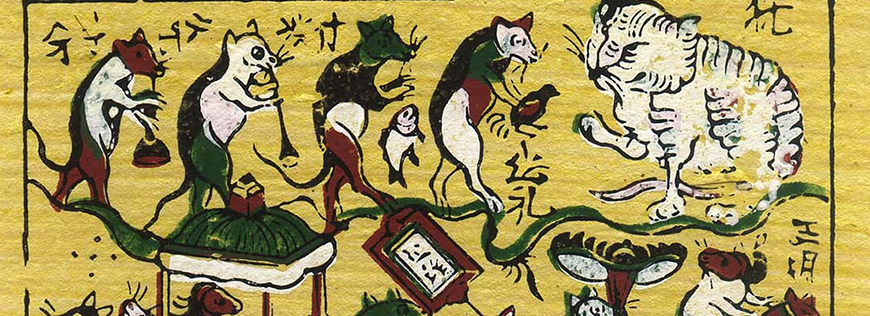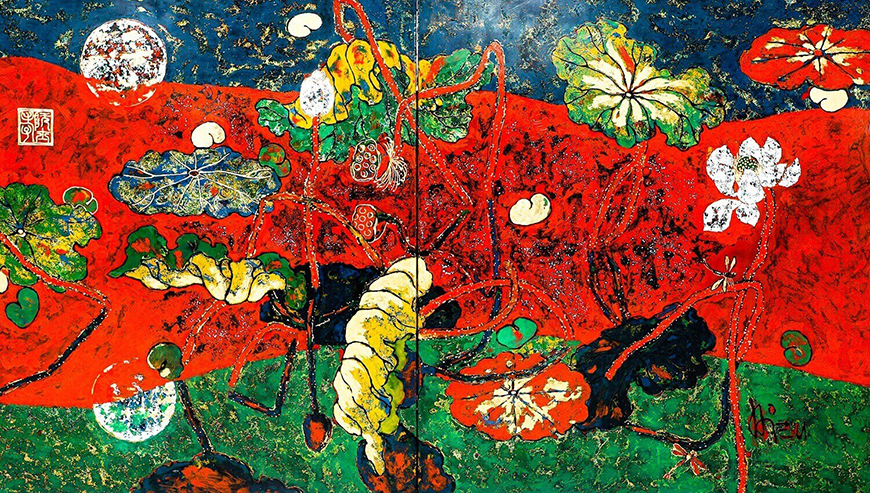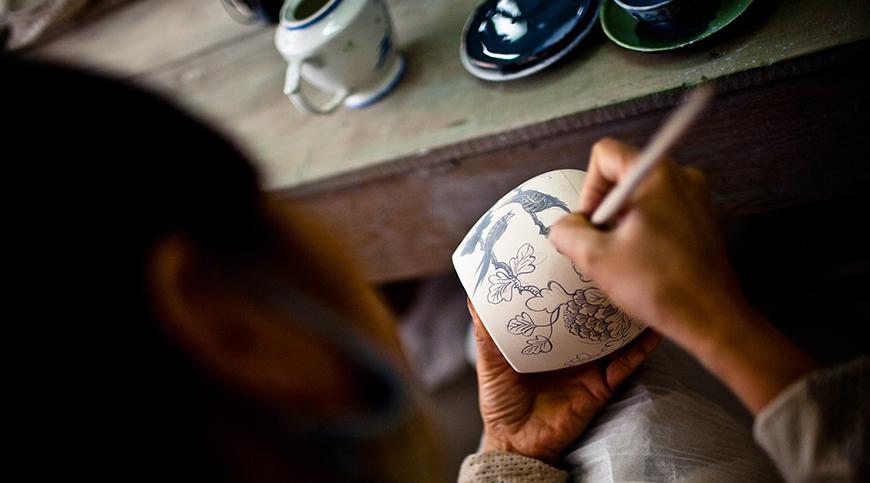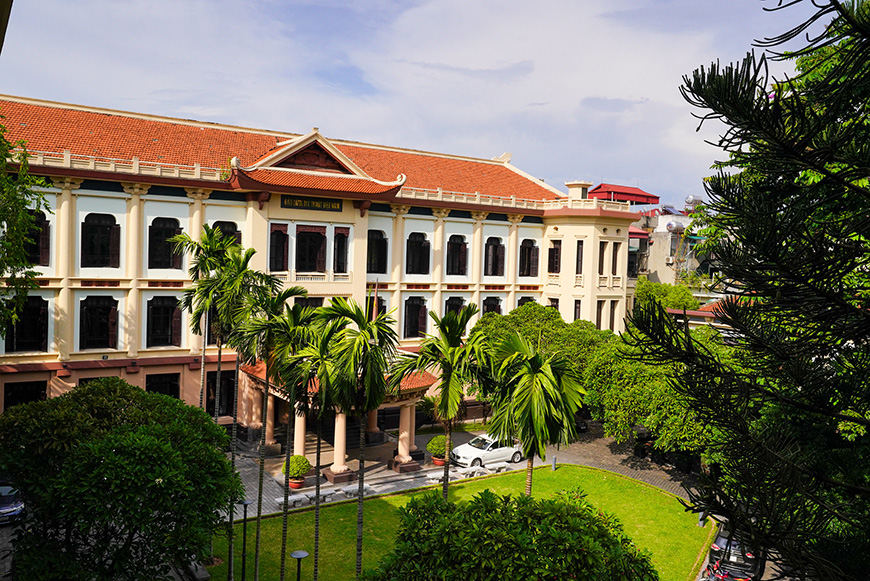Vietnamese painting is a flamboyant and diverse art, reflecting a rich cultural heritage and constant evolution. It stands out for its variety of styles, techniques, and influences, showcasing a unique artistic identity shaped by multiple influences.

Traditional; Đông Hồ painting - Source : Internet
Diversity of Styles
Two major currents define this artistic expression: traditional folkloric painting and modern painting.
Traditional Folkloric Painting
Rooted in the 12th century, this art form perpetuates ancestral techniques using natural materials to illustrate themes deeply rooted in local traditions and beliefs.
Works, like those from the Đông Hồ school, are often created on handmade paper and depict themes related to traditions, festivals, and local beliefs.
Modern Painting
Emerging in the early 20th century with the advent of the Indochina School of Fine Arts, modern painting skillfully blends Western influences with traditional Vietnamese elements.
Modern techniques include silk painting, watercolor, and oil painting.

A modern lacquer - Artist : Nguyen Sy Hieu - Source : Nguyen Art Gallery
Diversity of Techniques
The technical palette of Vietnamese painting is as rich as it is varied.
Silk Painting
This iconic technique was perfected by artists like Nguyễn Phan Chánh, who developed unique processes for washing and preparing silk, creating works with vibrant colors and a modern appearance. The use of silver or gold leaf glued on silk is a contemporary technique inspired by oil tempera.
Folkloric Paper Painting
Handmade papers are used as a support for works depicting votive drawings, festival scenes, historical figures, or daily activities. The Đông Hồ school is particularly renowned for this style.
Lacquer Painting
This distinctive technique has allowed artists like Nguyễn Gia Trí to create masterpieces often incorporating folkloric landscapes. Lacquer offers unique depth and brilliance effects.
Other Techniques
Chinese ink painting, oil painting, and ceramic painting are also used, showcasing the ability of Vietnamese artists to blend tradition and modernity.

Painting on ceramic showcasing the ability of Vietnamese artists to blend tradition and modernity - Source : Internet
Diversity of Cultural Influences
Vietnamese painting is the result of a mix of influences, including Chinese and French, while maintaining its own identity.
Chinese Influences
China has had a significant influence on Vietnamese art, especially through Taoism and Buddhism. Some Vietnamese folkloric paintings, like those from the Đông Hồ school, depict cult drawings with strong Taoist influences.
French Influences
During the French colonial period (1887-1954), Vietnamese art was exposed to Western techniques and styles. The Indochina School of Fine Arts, founded in the early 20th century, combined Western modernity with Vietnamese popular tradition in its teachings.
Modern Influences
The Doi Moi era, initiated in the 1980s, brought a new wave of innovation to Vietnamese painting. Freed from the constraints of socialist realism, contemporary artists now explore a multitude of themes, from national identity to current societal issues, using mixed techniques that blend tradition and modernity. This evolution has been accompanied by increased recognition on the global art scene, fueled by the emergence of galleries and a dynamic art market.

French influences in this painting from Le Pho - Source : Vy Gallery
Conclusion
Vietnamese painting is a rich and dynamic art form, reflecting both traditional heritage and contemporary aspirations of Vietnamese artists. It showcases a vibrant culture, a unique artistic identity, and constant evolution, making each work a journey through epochs and influences.

The Vietnam National Fine Arts Museum - Source : Mr Linh's Adventures
To go further
Vietnam National Fine Arts Museum
The
Vietnam National Fine Arts Museum, once a boarding school for the daughters of French officials, was built during the French colonial era. Today, it stands as a vital cultural and educational institution in Vietnam. The museum's meticulously curated galleries showcase a diverse collection of art treasures spanning centuries, from prehistoric times to the present day, revealing the rich history of Vietnamese creativity.
Address : 66 P. Nguyễn Thái Học, Điện Biên, Ba Đình, Hà Nội
Opening hours : 8:30 - 17:00 everyday
Entrance tickets
Adults: 40.000 VND
College and University students (with cards issued by Vietnamese higher education institutions only):20.000 VND
Children between the ages of 6 and 16:10.000 VND
Disabled people and children under 6 years old : Free
Guided Tour
Fee: 150,000 VND per group (limited to 25 people per group)
Languages: Vietnamese, English, Chinese.
Tours (lunch break from 11:30 AM to 01:30 PM):
- General introduction;
- Thematic tours:
- Collections tours (reservation in advance):